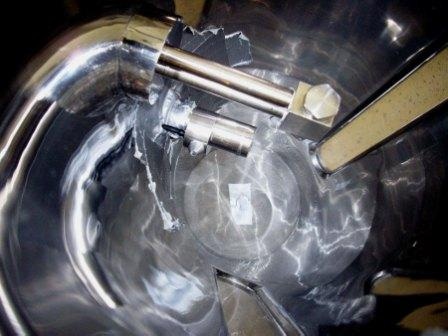March 5, 2013

The Parsum in-line particle sizing probe from Malvern Instruments is proving its value as a PAT instrument in granulation research being conducted at Ghent University in Belgium. Professor Thomas De Beer’s Process Analytical Technology (PAT) group at the university is successfully using the instrument to continuously monitor granulation processes and to develop effective automated strategies for process control.
The Process Analytical Technology group is part of the faculty of Pharmaceutical Sciences and focuses on identifying robust and relevant PAT tools. The team researches how these can be applied to improve manufacturing efficiency. Granulation trials have shown that real-time particle size measurements, in combination with other analytical data, support consistent production of granules to a defined specification.
“In our research we look at all aspects of PAT,” said Professor De Beer. “We focus not only on assessing different technologies and instrumentation for monitoring, but on applying the resulting data to process control. Using Parsum we have tracked the evolution of particle size in real time during fluidized bed granulations. The data provide detailed information during Design of Experiment (DoE) studies and enable us to develop models for real-time batch evaluation. These models help drive effective automated process control and reduce batch release times, both of which are important goals for pharmaceutical processors.”
PAT is playing a pivotal role in achieving the pharmaceutical industry’s stated aims of moving away from batch operation and off-line monitoring towards continuous, integrated processing and real-time release. Granulation is a unit operation that is used widely in pharmaceutical processing, particularly in tablet production, but its control can be challenging.
Professor De Beer’s research shows that by correlating particle size data - and other process variables such as binder addition rate and inlet air temperature - with granule quality defined in terms of density, it is possible to develop predictive process models. These can be used to define and control processing conditions to deliver a successful outcome. Such work is an essential precursor to the integration of granulation processes in continuous powder-to-tablet production lines.
The rugged Parsum probe measures particle size across the size range 50 to 6000 microns using the technique of spatial particle velocimetry. Available in a number of different probe lengths it is designed specifically for in-process use and can be installed directly into a line or vessel for real-time monitoring. With a number of in-built features that prevent fouling, the Parsum delivers continuous performance even for demanding applications such as wet granulation, and is easily integrated in automated control hierarchies.
For more news, equipment reviews, and articles, visit our Instrumentation & Process Control Equipment Zone
You May Also Like


